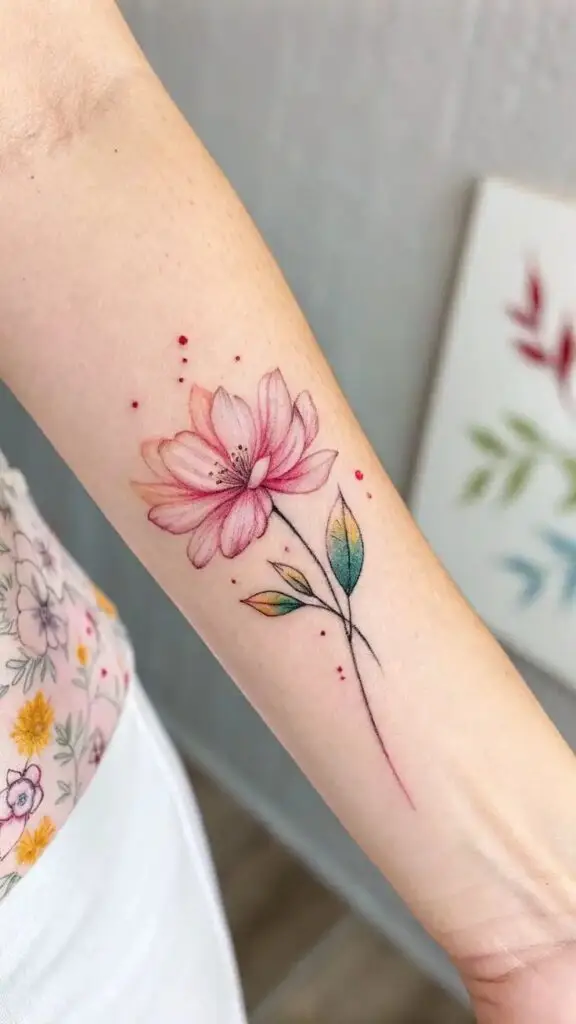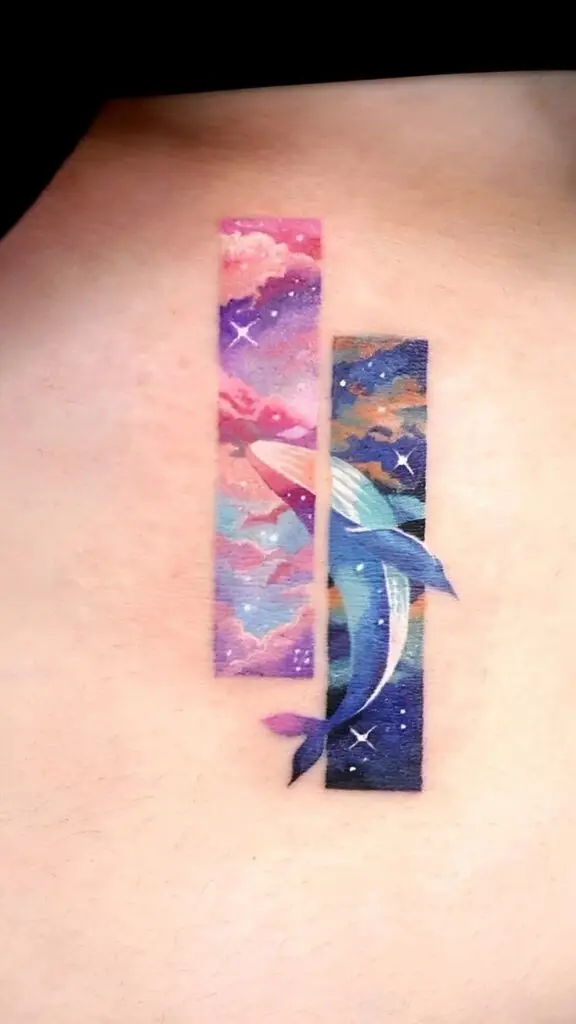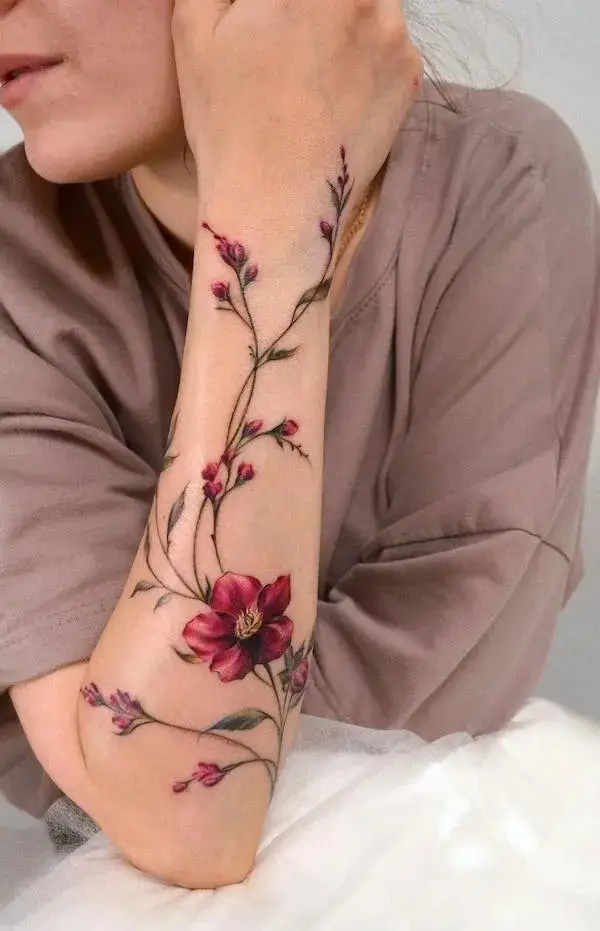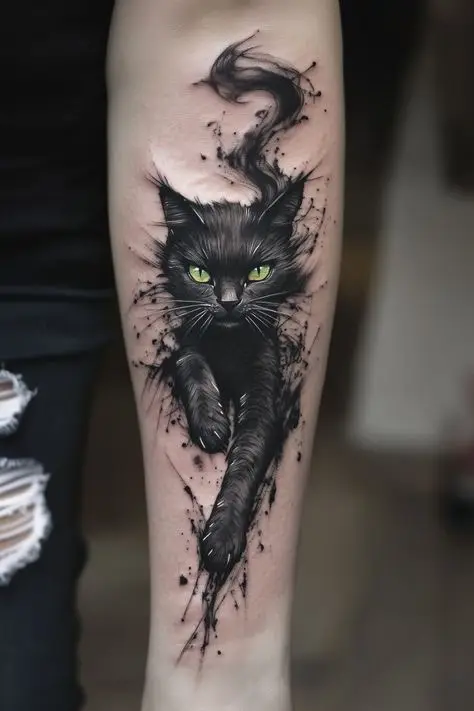Body art has evolved significantly, and unconventional techniques like watercolor tattoos, engraving, and pixel art are at the forefront of this transformation. These methods offer unique ways to express individuality and creativity through your tattoos, setting them apart from traditional designs. If you’re considering a tattoo that speaks to your artistic side, learning about these styles is essential.
Watercolor tattoos mimic the fluidity and vibrancy of paint on canvas, creating soft, blended colors that resemble a piece of art directly on your skin. Engraving, on the other hand, delivers a more structured approach, offering intricate detail that can tell a powerful story. Pixel art brings a nostalgic feel, combining elements of digital culture with body art for a modern twist.
Exploring these unusual techniques can inspire you to find the right expression for your personality and aesthetics. With the right information and inspiration, you can choose a tattoo that truly represents you and your artistic vision.


Key Takeaways
- Watercolor tattoos offer a unique blend of colors that resemble painted artwork.
- Engraving allows for intricate designs that tell a meaningful story.
- Pixel art combines nostalgic digital culture with modern tattoo aesthetics.
Exploring Watercolor Tattoos
Watercolor tattoos stand out for their vibrant colors and fluid designs, creating a unique aesthetic. Unlike traditional tattoos, they often forego black outlines, allowing colors to blend and flow into one another, producing abstract effects.
Characteristics of Watercolor Tattoos
Watercolor tattoos are characterized by their bright hues and painterly quality. They typically feature a splash of colors that emulate the look of a watercolor painting. This style allows for an expansive range of colors, often utilizing shades like blues, reds, and yellows in a non-linear pattern.
These tattoos lack the defined edges seen in conventional designs. Instead, you’ll notice soft transitions between colors which creates a sense of movement. This style can convey emotions or themes, making them highly personalized. You might find abstract designs that evoke natural elements, landscapes, or even ethereal themes.
Techniques in Watercolor Tattooing
Creating a watercolor tattoo involves specific techniques distinct from traditional methods. Artists often use the “splash” technique to achieve the fluid effect. This involves layering colors with a focus on transparency, leading to a lighter appearance.
Utilizing a machine with varying needle configurations allows for soft shading and color blending. Some artists may incorporate brush-like strokes to further enhance the watercolor effect. Beyond techniques, choosing the right artist is crucial, as experience in this niche style significantly impacts the final outcome.
Ultimately, you should consider the details and intricacies that make watercolor tattoos a captivating choice.


The Art of Engraving
Engraving represents a distinctive approach in tattoo artistry, merging traditional craftsmanship with contemporary designs. It utilizes intricate techniques to create striking visuals, often emphasizing black ink and geometric shapes.
Basics of Engraving Technique
Engraving in tattooing involves creating images by etching or incising lines into the skin. This technique typically utilizes specialized needles and machines designed to produce fine, detailed work.
The sgraffito method is notable in engraving. It features scratching through a top layer of ink to reveal the skin or a different ink beneath, resulting in unique textures.
Engraving can produce sharp, clean lines that define various styles. Common uses include geometric patterns and highly detailed imagery. This precision allows for versatility in designs, making it suitable for both large and small tattoos.
Engraving in Modern Tattoo Practices
In modern tattooing, engraving techniques have gained popularity for their artistic value and distinct appeal. Many artists incorporate engraving into their portfolios, showcasing an ability to combine traditional and modern styles.
Black ink remains the primary choice for engravings, enhancing the stark contrast necessary for this technique.
Artists often blend sgraffito with contemporary designs, creating captivating tattoos that stand out. Additionally, geometric shapes frequently accompany engraving styles, adding depth and interest to compositions.
This method not only attracts those looking for intricate designs but also appeals to collectors seeking unique tattoo art.


Pixel Art in Tattoo Design
Pixel art tattoos represent a unique blend of digital aesthetics and body art. This form of tattooing involves creating designs that mimic the aesthetic of pixelated graphics, often seen in retro video games.
Understanding Pixel Art Tattoos
Pixel art tattoos are characterized by their blocky appearance and limited color palette. Each design relies on small squares or “pixels” to create images that are intentionally simplistic yet impactful.
Common themes include:
- Characters from video games
- Iconic symbols
- Simple landscapes
You may find these tattoos appealing due to their nostalgic quality and the creativity they allow. The precision needed to create pixel art translates well into skin, providing vivid designs that stand out.
Fusion of Pixel Art and Traditional Tattooing
Incorporating pixel art into traditional tattooing techniques can enhance the uniqueness of each piece. Artists can adapt their styles to seamlessly merge pixel elements into more elaborate designs.
The fusion allows for:
- Rich color combinations
- Creative reinterpretations of classic motifs
- Enhanced individuality in tattoo choices
Using traditional tools like pencils, artists often sketch out pixelated concepts before tattooing. This process helps ensure precision and fidelity to the original idea. The result is a tattoo that offers both nostalgia and a fresh perspective.


Tattoo Aftercare and Long-Term Maintenance
Caring for your tattoo properly is essential for ensuring it heals well and maintains its appearance over time. Aftercare practices can vary based on the tattoo technique used, while long-term maintenance helps preserve the vibrancy of the design.
Proper Aftercare for Various Tattoo Techniques
Watercolor Tattoos require a gentle touch to protect the fluid blending of colors. Keep your tattoo covered with a breathable bandage for the first 24 hours. Clean the area with a mild soap and warm water, then pat it dry with a clean sponge.
Engraving Tattoos often involve deeper needle work, making them more susceptible to infection. After the initial bandage is removed, apply a thin layer of an antiseptic ointment. Avoid soaking it in water, opting for quick showers instead.
Pixel Art Tattoos can benefit from extra hydration. Use a fragrance-free moisturizer to keep the skin supple. This maintains sharp lines and prevents cracking.
Ensuring the Longevity of Your Tattoo
For long-term care, avoid direct sunlight, as UV rays can fade your tattoo. If you’re outdoors, use sunscreen with at least SPF 30 to shield your skin.
When cleaning, avoid rubbing alcohol, as it can irritate the skin and damage the tattoo. Instead, use a spray bottle filled with water to gently mist the area during cleansing.
Monitor your tattoo for any signs of fading or dryness. Reapply moisturizer regularly, especially during seasonal changes. Following these care guidelines will help your tattoo stay vibrant and beautiful for years to come.
- 195shares
- Facebook0
- Pinterest195
- Twitter0


